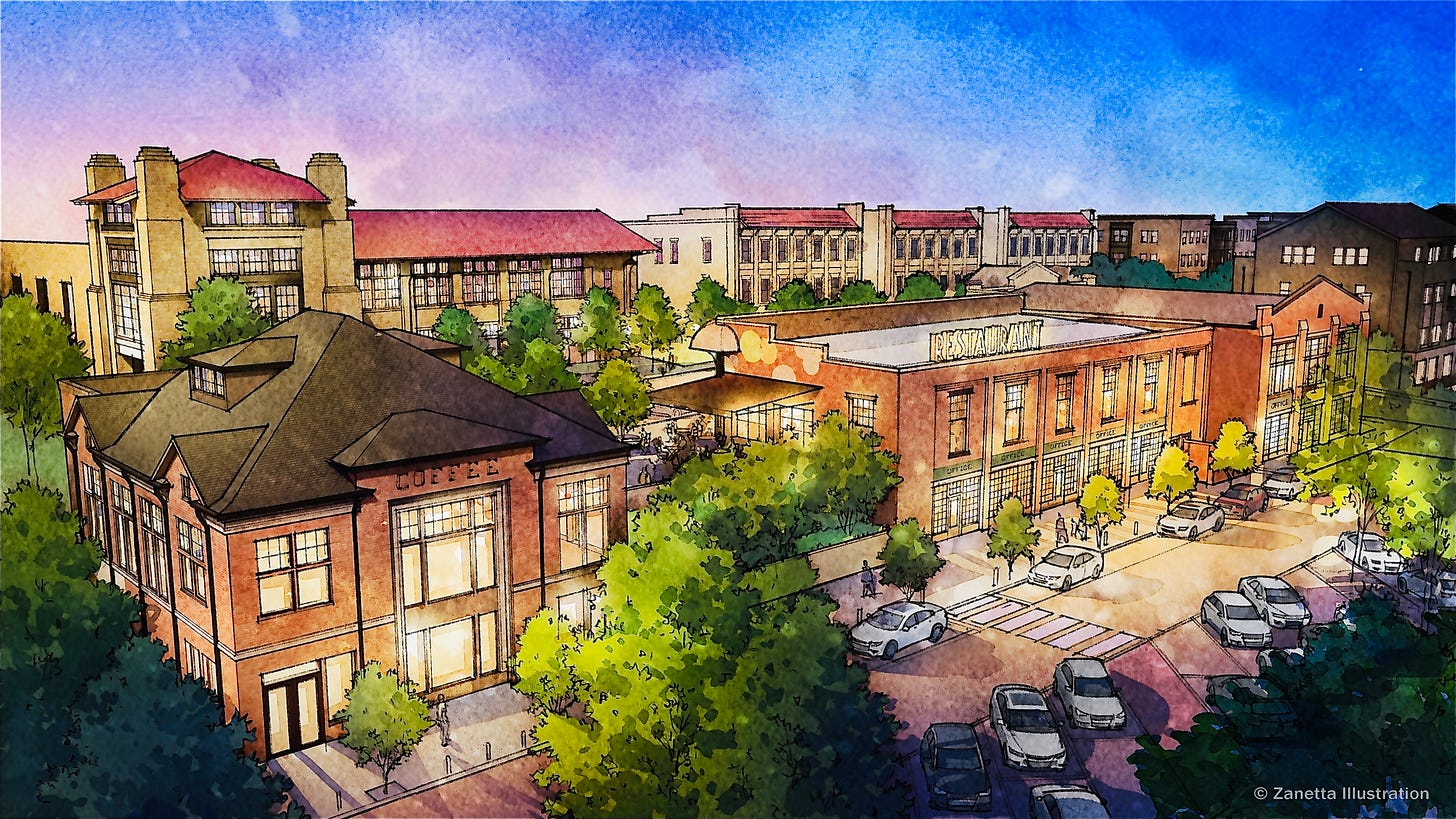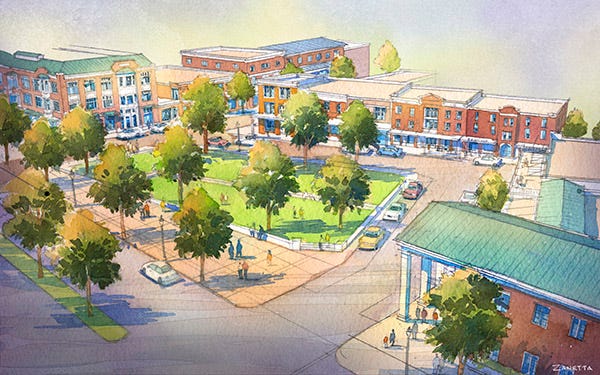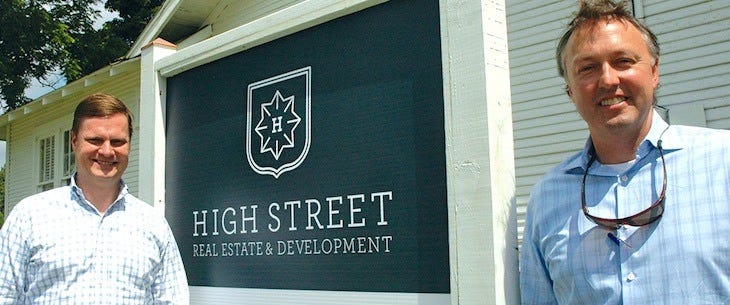Ward Davis' 30 Year Plan
BEHIND THE MIC SERIES #5 | An Arkansas Developer flips the script on institutional finance
In this series, I’ll be reflecting on some of my favorite conversations from Seasons 1 and 2 of The Townbuilder’s Podcast, which I had the pleasure of hosting. Throughout these seasons, I engaged in in-depth conversations with nearly two dozen new town developers and designers. With the podcast set to relaunch in 2025 under the new host Levi Wintz, I wanted to revisit these meaningful episodes, sharing my favorite discussions along with some fresh reflections.
You probably wouldn’t guess it, but the most interesting developer in Arkansas may be the least hurried one. Ward Davis is building neighborhoods that aren’t trying to win the next three years. They’re trying to win the next thirty.
His method is simple and strange and, increasingly, working: build places that are durable, walkable, and attractive. Lease them. Keep them. Repeat. There’s no hype machine, no value-engineering, no LPs clamoring for an exit.
Ward builds his developments like he’s going to be around. Because he is.
When you hear him talk about finance, you realize how much of the industry is structured to forget. Forget the user. Forget the community. Forget the building.
“There’s a huge disconnect between the users of assets and the people that build those assets,” he says. A contractor builds for a developer. The developer builds for a private equity fund. The fund flips to a REIT.
Everyone’s optimizing for IRR—a metric Ward calls “one of the goofier excesses” of real estate—because it rewards speed over endurance. A fast flip earns the same return on paper as a long-term hold, but the long-term hold demands patience, durability, and stewardship. None of those things show up in the cell formulas.
So developers chase yield. They slap retail onto ground floors and call it placemaking. They hunt for the one magic ingredient that made Seaside or Rosemary Beach or Serenbe work—usually a pastel paint job or some herringbone brick—and they copy-paste that aesthetic onto a hollow version of the original.
Ward’s seen it enough to know where it leads. “They think if they put the space there, the thing will be cool. It’s not.”
Instead, he builds small buildings in real neighborhoods and anchors them with actual tenants who want to stay. His team has a motto: figure it the heck out.
A few years back, the local hospital system wanted to be in one of Ward’s projects. Not just as a tenant—they wanted to partner. Ward built the building, secured a 15-year lease with annual escalators, and rolled the whole thing into non-recourse permanent financing. Four years later, it’s spitting off cash and paying down debt with a quiet confidence that seems out of place in modern development.
Most developers wouldn’t even try to hold that kind of project. The entire capital stack is built around the assumption that the building will be sold as soon as the ink on the CO dries.
But Ward isn’t trying to get out. “We’re making investments in property that are Class A now and Class A in 30 years,” he says. He means it. His buildings use real materials. The proportions are right. The retail addresses the street. It’s beautiful, but not loud about it.
It turns out that long-term thinking creates its own gravitational pull.
Family offices—actual people with actual capital and something like legacy on their minds—are showing up. Ward isn’t cold-calling them. They’re finding Ward. And when they do, he doesn’t make a pitch. He listens.
“It’s like dating,” he says. “You find out what they’re trying to accomplish, and then describe your model in those terms.” They’re tired of being herded into index funds and tech ETFs.
Family offices want yield, appreciation, and pride. Ward offers all three.
This wasn’t where he started, though. Ward’s first deals were one-house rehabs in tough neighborhoods. He had a job and a buddy and a few rentals. But he didn’t skip steps.
“You want to screw up at small scale before you screw up at large scale.”
That humility never really left. He still talks like someone who’s not sure he’s figured it out. Which is probably why he has.
Ward believes the buildings we construct should age well—just like the people who live in them, the trees that grow alongside them, the businesses that take root on their corners. When he builds, he’s not just solving for a return metric. He’s solving for a place that gets better over time.
There is something quietly redemptive about this—building not as conquest, but as a kind of covenant. A promise to be around. A willingness to deal with the future consequences of your own decisions. You don’t see that much anymore.
“We’re not that weird,” Ward says. “We’re just trying to do something that works.”
And it sure looks like it does.







